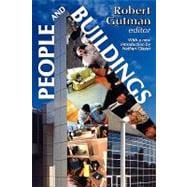
Note: Supplemental materials are not guaranteed with Rental or Used book purchases.
Purchase Benefits
What is included with this book?
| Preface | p. xi |
| Introduction to the Transaction Edition | p. xvii |
| Contributors | p. xix |
| Behavioral Constraints on Building Design | |
| The Aesthetics of Function | p. 3 |
| Physiology and Anatomy of Urination; | p. 17 |
| Design Considerations for Urination | p. 21 |
| Cultural Variability in Physical Standards | p. 33 |
| Invasions of Personal Space | p. 54 |
| Territoriality: A Neglected Sociological Dimension | p. 65 |
| The Physical Environment: A Problem for a Psychology of Stimulation | p. 83 |
| Spatial Organization and Social Interaction | |
| The Psycho-Social Influence of Building Environment: Sociometric Findings in Large and Small Office Spaces | p. 97 |
| Architecture and Group Membership | p. 120 |
| Silent Assumptions in Social Communication | p. 135 |
| The Social Psychology of Privacy | p. 152 |
| Social Theory in Architectural Design | p. 170 |
| Environmental Influences on Health and Well-Being | |
| The Housing Environment and Family Life | p. 189 |
| Medical Consequences of Environmental Home Noises | p. 202 |
| Effects of Esthetic Surroundings: I. Initial Short-Term Effects of Three Esthetic Conditions upon Perceiving "Energy" and "Well-Being" in Faces | p. 212 |
| Effects of Esthetic Surroundings: II. Prolonged and Repeated Experience in a "Beautiful" and an "Ugly" Room | p. 220 |
| Grieving for a Lost Home | p. 229 |
| Health Consequences of Population Density and Crowding | p. 249 |
| The Social Meaning of Architecture | |
| Images of Urban Areas: Their Structure and Psychological Foundations | p. 271 |
| Furniture Arrangement as a Symbol of Judicial Roles | p. 291 |
| Fear and the House-as-Haven in the Lower Class | p. 299 |
| Pecuniary Canons of Taste | p. 314 |
| Place, Symbol, and Utilitarian Function in War Memorials | p. 327 |
| The Application of Behavioral Science to Design | |
| The Questions Architects Ask | p. 337 |
| The Room, A Student's Personal Environment | p. 370 |
| Old People's Flatlets at Stevenage | p. 384 |
| Typology and Design Method | p. 394 |
| The City as a Mechanism for Sustaining Human Contact | p. 406 |
| Annotated Bibliography | p. 435 |
| Index | p. 463 |
| Table of Contents provided by Ingram. All Rights Reserved. |
The New copy of this book will include any supplemental materials advertised. Please check the title of the book to determine if it should include any access cards, study guides, lab manuals, CDs, etc.
The Used, Rental and eBook copies of this book are not guaranteed to include any supplemental materials. Typically, only the book itself is included. This is true even if the title states it includes any access cards, study guides, lab manuals, CDs, etc.